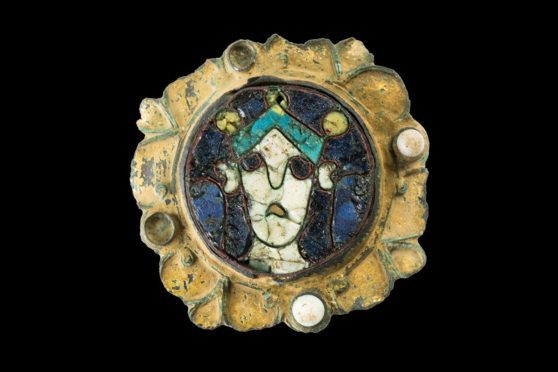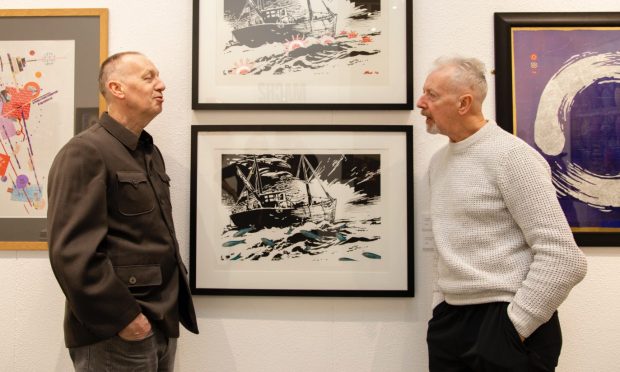HISTORICALLY, the Anglo-Saxon period denotes Britain between about 450 and 1066, from the initial migration from northern Europe and up until the Norman Conquest – and, of course, it is remembered as the era in which the English nation was established.
Thoughts hereabouts tend to dwell on the Picts at this time, yet the Anglo Saxons also inhabited the east of Scotland, and its language was spoken and written here, to an extent, until about the 12th century.
It is also thought that many of the Anglo-Saxon nobility fled to Scotland after the Normans conquered in the ten-hundreds. The chronicler Orderic Vitalis (1075-c1142), himself the product of an Anglo-Norman marriage, wrote in Historia Ecclesiastica, “And so the English groaned aloud for their lost liberty and plotted ceaselessly to find some way of shaking off a yoke that was so intolerable and unaccustomed.”
Dukes of Dorchester’s recent sale of antiquities included an impressive Anglo-Saxon gilt metal and enamel brooch.
A rarity, of course, the enamel roundel was formed in four colours, and probably represented the head of a king. This central motif is reminiscent of the similar enamel face, thought to represent the sense of sight, in the best-known example of Anglo-Saxon goldsmithing, the Alfred Jewel at the Ashmolean in Oxford (though this masterpiece comes with the inscription, Aelfred Mec Heht Gewyrcan – ‘Alfred ordered me to be made’.)
The brooch at the Dorset auction house was dated to the 9th-11th Centuries and measured about two inches at its widest point.
It was found by a metal detectorist in Surrey. Unusually, it was almost complete.
Pitched with pre-sale hopes of £3000-£5000, it took a decent £6800.










